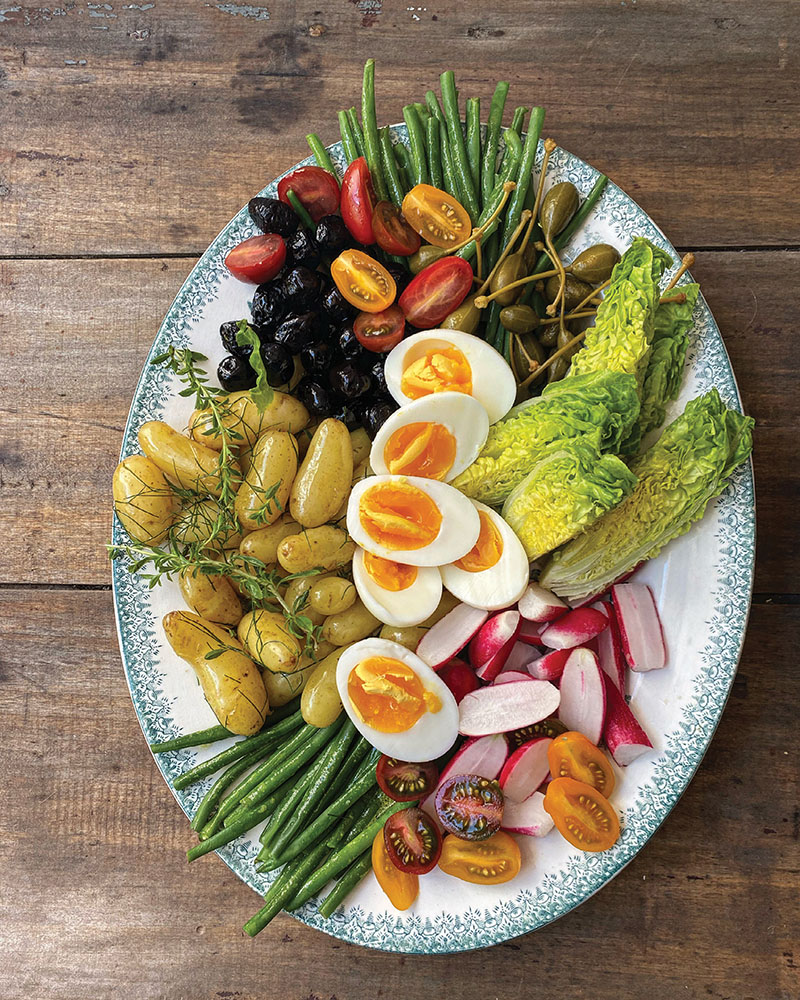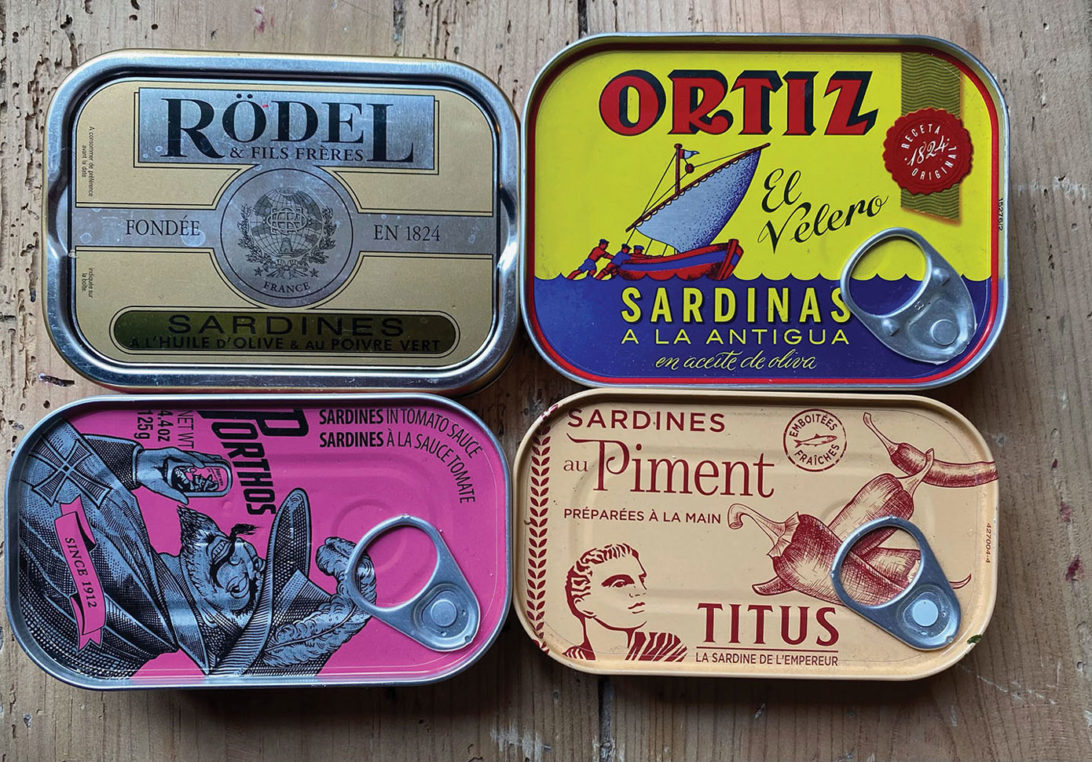The most remarkable recent renaissance is that of tinned fish. Trish Deseine gets hooked on the tiny tins
Jumping on food bandwagons is fun, even if it is just for a quick scoot around before jumping straight off again. Over the years, I have earnestly served friends crispy maggots with drinks, pretended kale was delicious in morning smoothies and spiralised anything that would surrender its supple flesh to my ugly machine. But nothing lasted. I have documented to the point of exhaustion my foray into veganism and in the end, I consciously uncoupled from the regime, along with the person who had briefly imposed it on me, and ran back into to the loving arms of butter and bacon.
I confess I used to love novelty for novelty’s sake, there was a sense of adventure about it, no matter how fleeting or shallow, and I might even have been at the forefront of the “Foodista” trend in France for about five minutes. But nowadays, “fashionable” food on Instagram is easily drowned in the sheer volume and noise, with dishes often losing appeal the minute their Reel or TikTok ends. That said, it is always fascinating to clock the time lapse between the hot, new ingredient discovery or menu item’s emergence and its watered-down iteration hitting Deep France supermarket shelves. When you come across yuzu fromage frais in Marolles-les-Braults Super U, you can be sure the once rare citrus has finally gone mainstream a decade after Pierre Hermé’s divine new macaron appeared. What is much more intriguing, in the world of food fads, however, is how familiar items can suddenly, randomly it seems, be annointed with coolness and get a whole new lease of life.
The most remarkable recent renaissance is that of tinned fish, where the perfect storm of lockdown hoarding and comfort eating, mixed with reduction in meat consumption and increased awareness of health benefits, has caused a boom in the market. All these elements are, of course, added to the attraction of vibrant, vivid tin designs. At best they will deter you from actually eating the contents (it’s fine, they mature beautifully for up to two or three years in oil) so you can display them on your kitchen shelves, and might even make you want to repaint the entire space to match.
In France, Spain and particularly Portugal, preserved (sounds much sexier than tinned or canned, let’s be honest) fish has been an integral part of food culture since canning methods were invented. Portuguese sardines have become one of the country’s most recognisable symbols, after the Ramirez company first used the newly developed appertization or pasteurisation canning method in 1865, designed to stretch sardine eating beyond the fishing seasons. These days, there are over 20 sardine canneries in the country, perhaps the best known being La Gondola in the North and Conserveira de Lisboa in Lisbon, famous for its Tricana and Minor brands. From Spain, we all know the bright yellow, blue and red Ortiz tins of premium anchovies and tuna. These tins are undeniably beautiful, and fun to shop for, but do go beyond tuna, sardines and anchovies – all vital, reassuring members of your store cupboard umami-boosting, meat-reducing team. Search for delicious garnishes of spices, peppers, lemon, tomatoes and garlic or Portuguese or Spanish recipes of octopus or cod, squid stuffed with rice, sardine or cod roe or, my péché mignon, smoked cod liver. All you really need to serve with them is good toast and butter, and perhaps a squeeze of lemon. But you could also go to town and surf the current trend just like NY-based food creative, Laila Gohar, who recently made waves with her Fiesta de Conservas, serving fabulous Venus butter sculptures, salad leaves, crudités, steamed artichokes, asparagus and boiled eggs and potatoes alongside her favourite fancy tins of sardines, mussels and cockles.

Classic Salade Niçoise with Irish Tuna
Excellent preserved fish brand Shines Wild Irish Tuna or Yellowfin Tuna in olive oil or brine are just perfect for a gorgeous summer Niçoise.
For 6-8 people
25 minutes preparation 10 minutes cooking
15-20 small new potatoes
150g green beans, topped and tailed
6 eggs
4 little gems, cut in 4 lengthwise
150g pitted black olives, drained
50g capers
6 medium tomatoes, quartered
500g Shines tuna in olive oil
1. Cook the eggs for ten minutes in boiling water. You want them still a little soft in the middle, and not too cold. Cut them in half lengthwise and set aside.
2. Steam the potatoes and beans.
3. Assemble the salad on a platter with the dressing on the side.
For the dressing, crush 2 cloves of garlic, finely chopped, with 3 or 4 salted anchovy fillets and a little salt. Add 3 tbsp Dijon mustard, 100ml red wine vinegar, 200ml olive oil, and salt and pepper, and whisk.
Pan Bagnat
Originally the highly portable snack of Mediterranean fishermen and traditionally made with tuna and anchovies, this is a good base for all preserved fish and seafood.
For 1
20 minutes preparation
1 round country loaf about 15cm in diameter, cut in half, crosswise
2 celery sticks, cut into pieces
1 medium red onion
2 radishes, topped and tailed, sliced
1 medium tomato, sliced
1 sliced artichoke heart in oil
A few basil leaves
1 hard-boiled egg
2 tbsp of tuna in oil
1 or 2 anchovy fillets in oil
5 or 6 pitted black olives
1 tsp of red wine vinegar
Salt and pepper, olive oil
1. Assemble your pan bagnat by first placing the tomato, then the celery, onion and radish in the bottom half of the bread. Then add the tuna, anchovy and egg. Season with salt, then vinegar and finally olive oil. Then place the artichoke, basil and olives on top and close with the other half of the bread. Eat immediately or let it rest, so that the flavours soak the bread and intermingle in the fridge.
Follow Trish on Instagram @trishdeseineencore and Twitter @TrishDeseine





